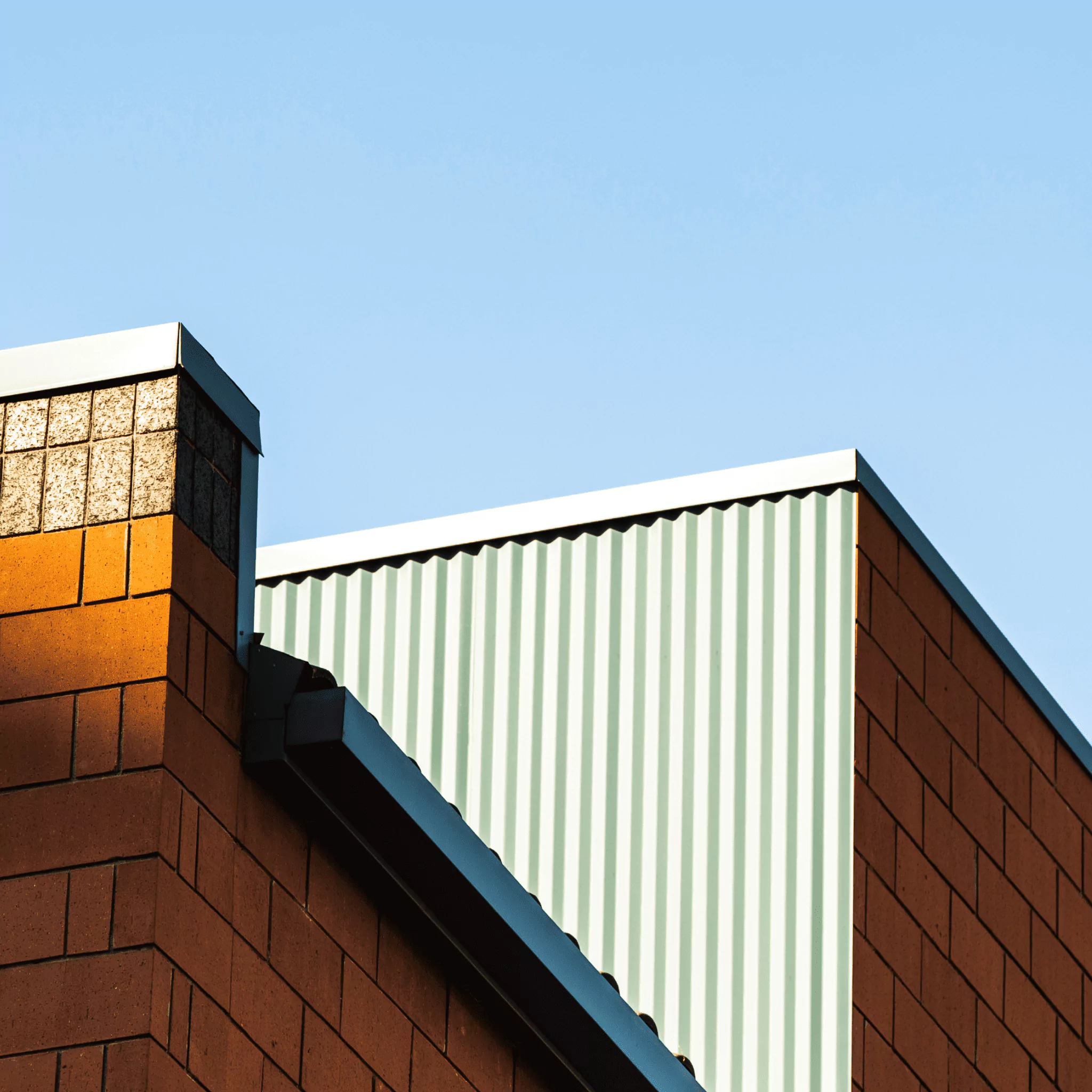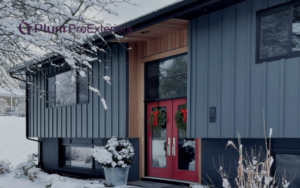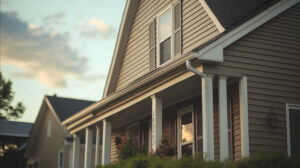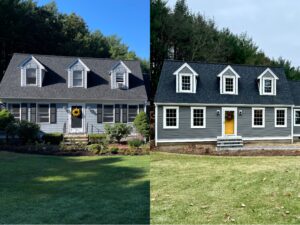

Project Manager at Plum ProExteriors
10 Tips to Extend the Life of a Commercial Roof

Proper commercial roof maintenance can save you a lot of worry. While buying a new roof is always a choice, it is much more expensive. Furthermore, installing a new roof is a complicated and time-consuming process, in contrast to regular small inspections and separate issue resolution.
We have prepared 10 commercial roofing tips to prolong your roof’s useful life. Applying them practically lets you feel secure about your house’s longevity and avoid unnecessary spending on a new roof. Read this all the way through to protect your commercial roof effectively. Let’s start!
1. Regular inspections
Firstly, an effective roof maintenance plan must include regular check-ups. As people should systematically visit doctors to prevent serious health issues, the commercial roof requires roofing preventative maintenance.
Recommended frequency of inspections
The frequency of inspections depends on the roof’s age and environmental climate. A new roof can be checked once every two years, while those 5 years old or older require observations twice a year.
In areas with severe climates for roofs – frequent rains, harsh cold, extreme heat, high winds, and salt exposures – ceiling inspections must be conducted twice a year, right after installation.
Key areas to focus on during inspections
To make the roof checkups effective, concentrate on reviewing the following:
- Roof tiles or shingles
- Drains and gutters
- Fascia and soffits
- Ventilation in attics

- Rot, mold, or mildew signs
- Gaps or fissures in joints and seals
- Broken or absent fasteners
- Ceiling water spots or leaks
2. Proper drainage
Water is among the worst enemies of commercial roofing maintenance. Water accumulation causes leaks, destruction to the structure, and the appearance and expansion of mildew or mold.
Importance of sound drainage systems
Well-constructed drainage systems are a pledge of inner roof structure dryness and durability. They divert water away from the roof and foundation.
Tips for maintaining gutters and downspouts
To keep gutters and downspouts in the drainage systems in good condition, we advise to:
- Assure gutters and downspouts proper position and slope
- Set gutter guards
- Wipe leaves and other debris
- Monitor rust or corrosion appearance
3. Addressing minor issues promptly
While regular monitoring is essential for commercial roof maintenance, promptly addressing revealed problems is equally important.
Common minor issues
We collected the most common minor issues that can and should be resolved quickly:

Small leaks
Water seeping through a roof leak will bleed into your walls and ceiling, and even a single minor leak may cause discoloration around your corners, walls, and ceiling. To guarantee a tight seal, replace the damaged shingle and nearby ones.
Loose materials
Sloppy shingles, flashing, or roof vents are frequently a reason for water infiltration and harm to the underlying roof structure. Make sure these components are installed firmly. Check and fix them at least twice a year.
Clogged or sagged gutters
Bending, cracking, or bowed gutters are signs of sagging. Such a deficiency leads to improper water drainage and getting into the wrong place. To avoid these issues, ensure the gutters are securely fastened and systematically remove debris, especially heavy trash.
Why immediate action is crucial
Prompt resolution is necessary due to any issue’s unexpected consequences. A small concern can start a chain of more serious and expensive troubles. Thus, manage the difficulty right after it is revealed so you can stop the problem at its inception.
4. Keeping the roof clean
Tidiness is paramount for commercial roofing maintenance. A tiny piece of garbage can start the festering process and affect not only the roof structure but the whole house.
Debris removal
Constantly clean the debris. Debris accumulation might choke your ventilation system or gutters. This, in turn, will cause overall damage and concerns with water drainage specifically.

In the winter, snow is also considered garbage and requires removal, as snow buildup adds significant weight to your roof and gutters. This stress leads to structural damage or ice dams obstructing proper water flow.
Preventing moss and mold growth
When moss appears in the roof structure, it takes a short time to spread drastically. It is much more time-saving to clean the small piece infected with moss, algae, or mildew than to shingle the entire roof.
The mold gradually weakens the structure of the building. The feeble roof and walls, in turn, threaten the security and welfare of its residents. To effectively prevent the spread of dangerous microorganisms, you can:
- Use copper or zinc strips to stop their growth
- Install a reliable roof ventilation
- Trim any overhanging branches to lessen shade

5. Managing foot traffic
Commercial roof maintenance also includes proper foot traffic management. While you can not cancel foot traffic altogether, you can still limit it so it does not damage the roof.
Implementing walkway systems
Firstly, implement convenient walkway paths for those who need to get on the roof. This means installing reliable tools such as a professional ladder, reinforced roof walkways, rubber pads, and protective mats made with appropriate materials by experts.
Limiting access to authorized personnel
Even with a secure set of walkway systems, it is still better to restrict roof access exclusively to construction workers. Acknowledged in this field, they will not harm the cover itself or its elements like gutters and downspouts.
6. Professional maintenance
Expert commercial roof preventative maintenance implies consulting with professionals regarding commercial roof care. Moreover, it includes hiring professional roofing contractors exclusively.
Advantages of trusting qualified roofers
Though hiring experts might be costlier than repairing yourself, it is still cheaper than an entire roof replacement. Other benefits of hiring professionals include:
- Your peace of mind: You can be calm about the quality of service. Experts apply a unique approach to each case, mitigating particular deficiencies.
- Efficiency: Roofing contractors deal with the field almost every day. They know how to arrange the work to minimize the work time.
- Guarantee: Contractors usually provide you with a guarantee. You can turn to them for free if an issue arises within a certain period.
Types of maintenance services to consider
The most common and effective maintenance services are:
- Annual maintenance agreements: These include cleaning, minor repairs, and inspections, which extend the asset’s life and prevent expensive malfunctions.
- Risk-based maintenance: Focus on maintenance activities based on risks linked to a particular failing component.
- Preventive maintenance: Equipment should receive planned maintenance such as lubrication, cleaning, and part replacement to avoid unplanned malfunctions.
- Condition-based maintenance: CBM is aimed at measuring vibration, temperature, and pressure by sensors and diagnostics.
7. Weather protection
The frequency and extent of industrial roof maintenance depend heavily on the regional climate. It’s imperative to perform preventative maintenance in regions with severe weather.
Preparing for severe weather conditions
How can you prepare your commercial roof for unexpected weather changes?
- Conduct a thorough inspection, looking for any damage or weak areas that might get worse by bad weather.
- Clean up all debris from gutters and downspouts.
- Secure loose materials, strengthening weak spots.
- Ensure the roof has enough ventilation and insulation to prevent severe damage.
Seasonal maintenance tips
Each season has its peculiarities, so it is essential to acknowledge and mitigate potential seasonal damage.

Winter: Snow and ice buildup during the winter increases weight and the chance of leaks upon thawing. To avoid unnecessary weight and guarantee proper drainage when the ice melts, regularly clear snow and ice.
Fall: If leaves and other debris are not removed from gutters and downspouts in the fall, water can damage the roof structure. Clear leaves and other debris from gutters and downspouts to prevent water buildup and possible roof damage.
Spring: Springtime brings severe rainfall. It’s important to check for damage from past seasons and make sure drainage is properly set. Check for past-season damage and ensure drainage systems are in good condition to withstand significant rains.
Summer: In the summer, heat can cause materials to expand, distort, or crack, so it’s necessary to look for such weaknesses. Inspect material expansion and probable cracks produced by heat.
8. Proper ventilation
Ventilation is crucial to prevent humidity and avoid mold and moss spread. The properly constructed ventilation in the attic expands your commercial roof lifespan for a long time.
Importance of attic ventilation
Adequate ventilation dries out the attic throughout the year, thus helping you avoid condensation and lowering the possibility of moisture-related issues. Attic ventilation prolongs the life of roofing materials by controlling moisture and temperature, which decreases the need for expensive repairs or early roof replacements. Moreover, attic ventilation keeps your house cooler by letting hot air leave, which lessens the strain on your air conditioning systems and lowers your energy costs.
Poor ventilation indicators and solutions
How can you tell that you have ventilation problems? You can recognize the need to inspect the airing system by noting:
- Unpleasant smell: Verify that vents are open and consider adding more vents or fans to increase circulation.
- Mold throughout the house: Eliminate mold, fix attic insulation, and use dehumidifiers to improve ventilation.
- Declining air quality: Installing take and exhaust vents and clearing any blocked or clogged vents.
- Excess condensation: Identify areas with inadequate airflow, adjust ventilation systems, and add ridge or soffit vents.
9. Energy-efficient upgrades
Among proper ventilation, other tools can reduce energy consumption, such as cool roofing and insulation.
Cool roofing options
Buildings with reflective roofing stay cooler in the summer by reflecting up to 90% of the solar radiation.

Insulation improvements
- Fiberglass insulation: Implies soundproofing and thermal performance, includes moisture-resistant properties.
- Foam board insulation: Features high R-values and low thermal conductivity, offers thermal resistance, is lightweight and easy to install.
- Spray Foam Insulation: Fills gaps and crevices, creates an airtight seal and reduces air leaks.
- Reflective or radiant barrier insulation: Lowers heat transfering, enhances cooling efficiency in hot climates.

10. Documentation and record-keeping
Industrial roof maintenance requires record-keeping for the long useful lifespan. It helps ensure timely repairs and preventative measures.
Importance of maintaining a roof maintenance log
By keeping track of your upkeep, you can identify minor problems early on and save costly future repairs or an early roof replacement. Furthermore, a maintenance journal offers past data helpful for determining trends, patterns, or reoccurring concerns. Thus, facilitating well-informed decision-making for upcoming repairs or improvements.
What to include in your records
Adding the following aspects to the maintenance journal raises your chances of making more well-informed decisions regarding your roof.
- Inspection dates
- Issues descriptions
- Repairing measures
- Expenses
- Recommendations
- Photographic evidences
- Warranty Information
Conclusion
Commercial roofing maintenance requires dedication to avoid unnecessary expenses and roof replacement. A regular care deprives you of serious difficulties and is less time-consuming.
Contact us to develop your effective commercial roof maintenance plans. With our expertise, we will ensure a thorough inspection and take all essential measures to expand its useful lifespan.





